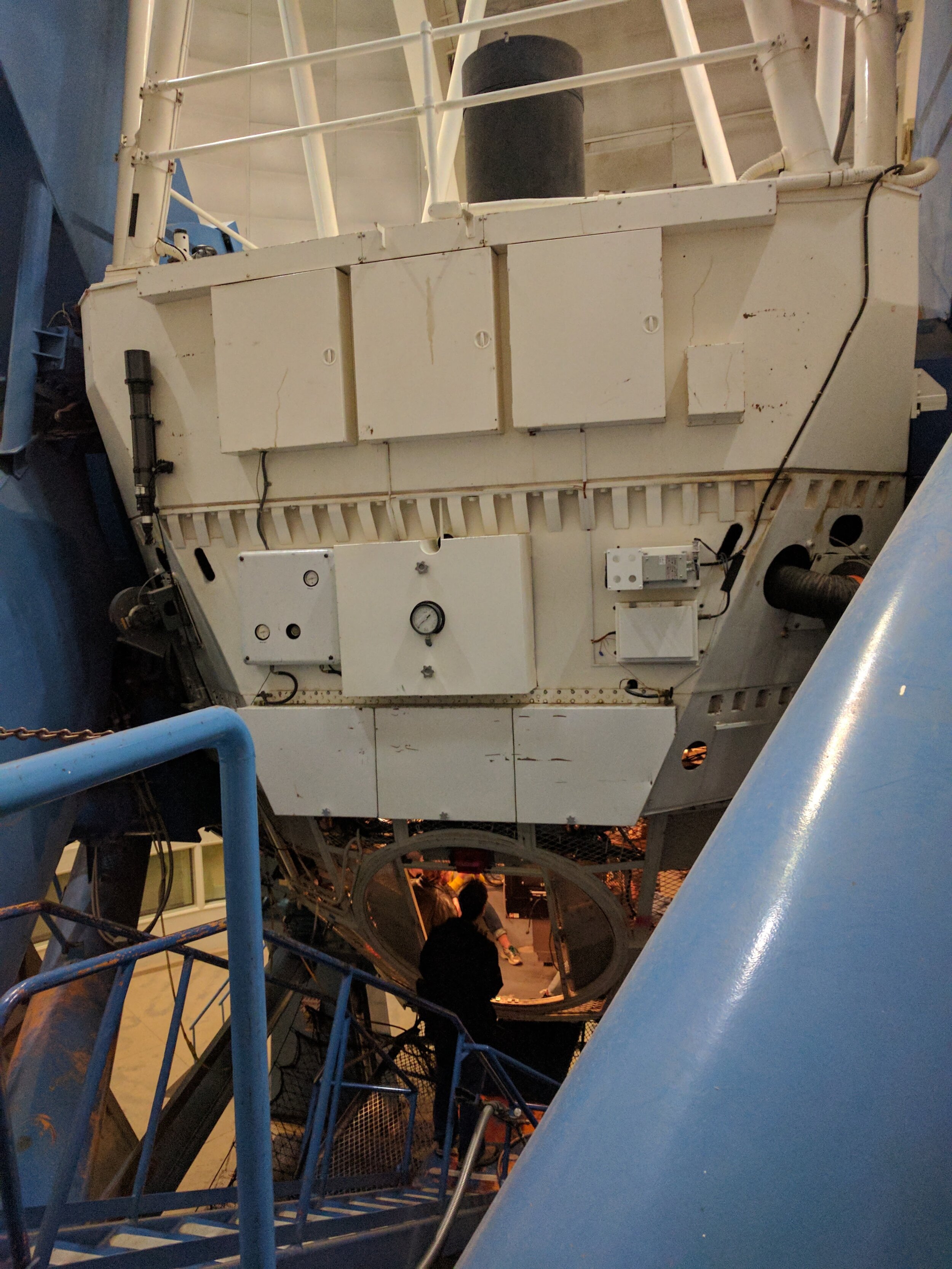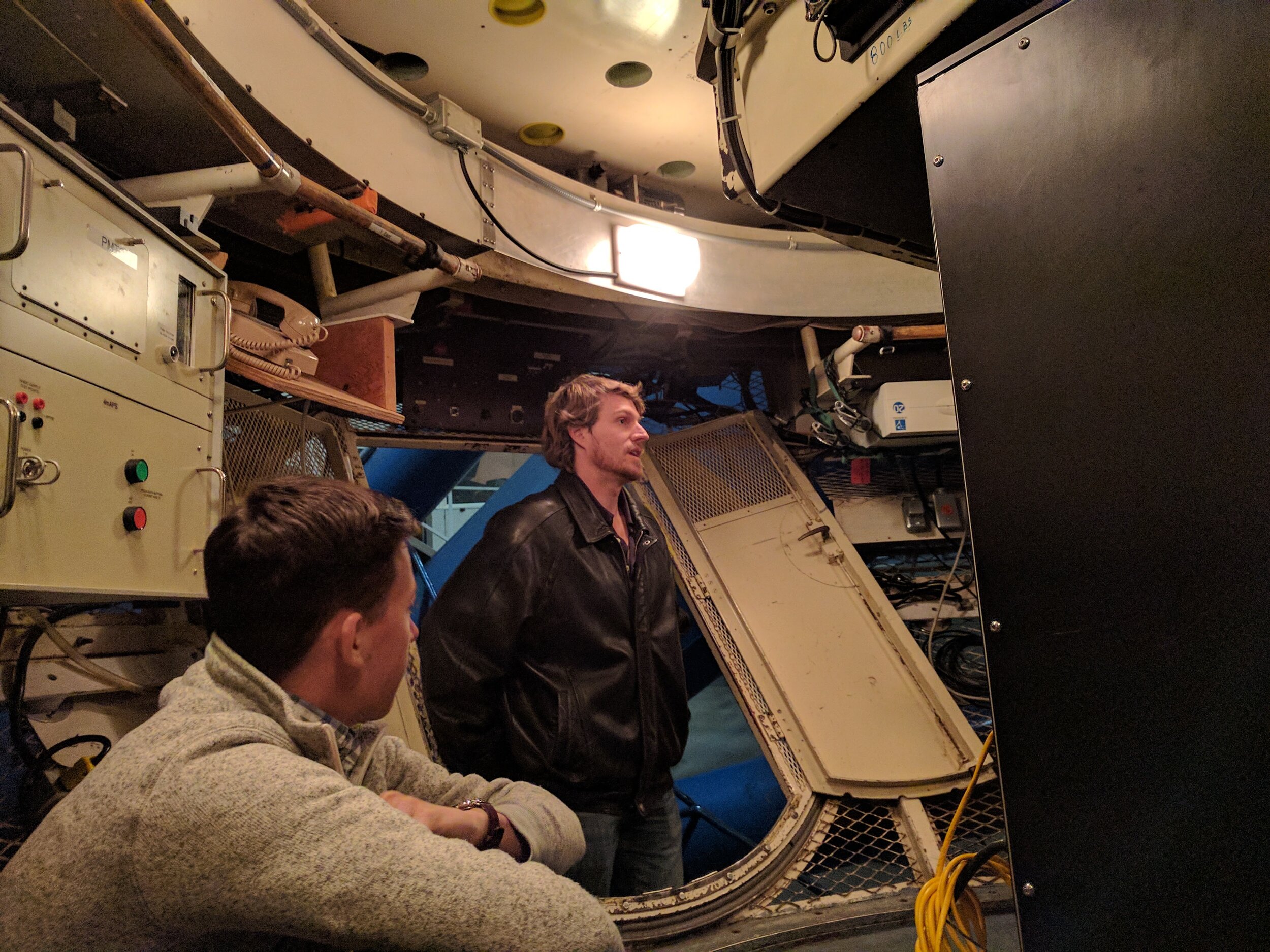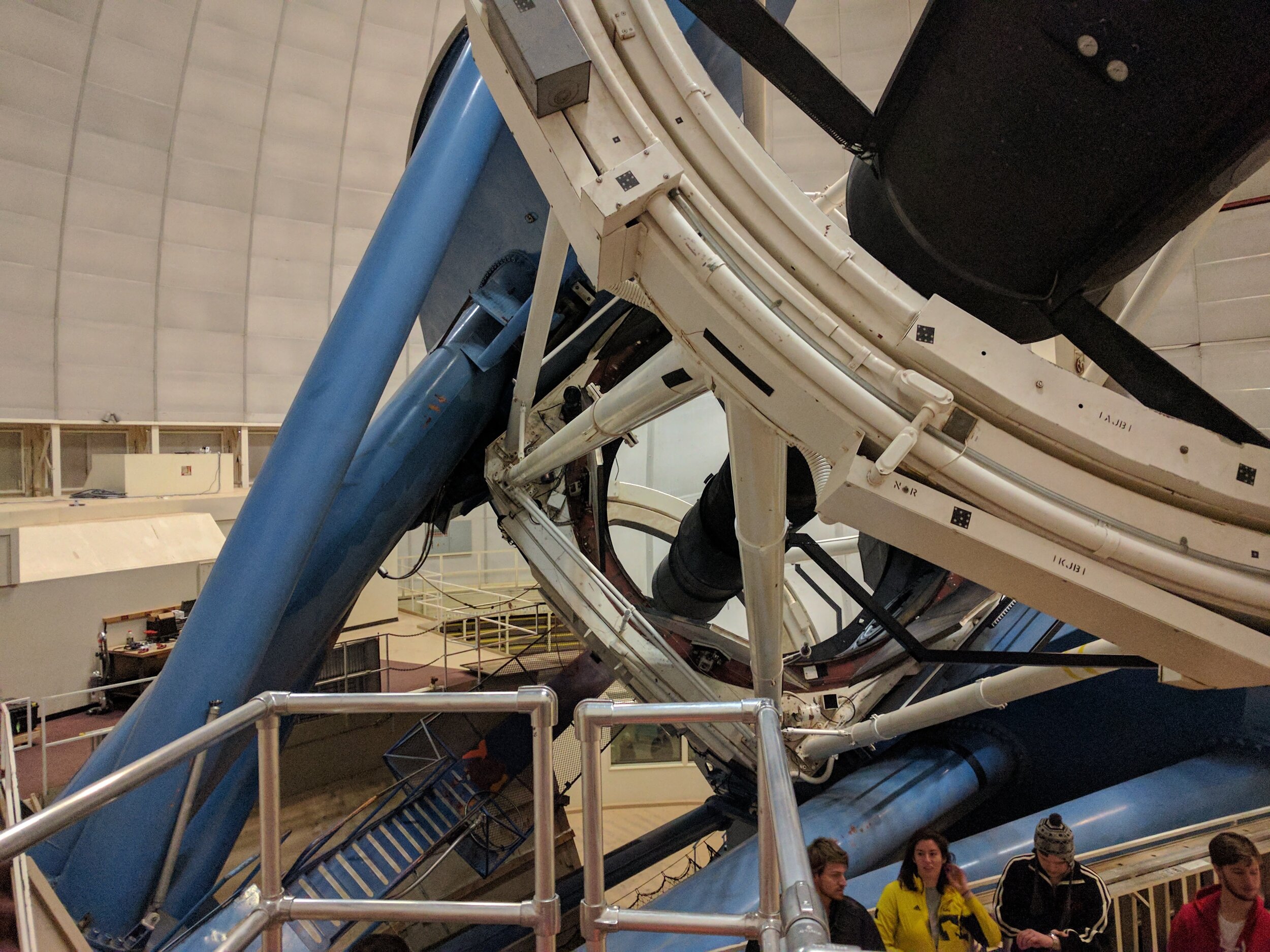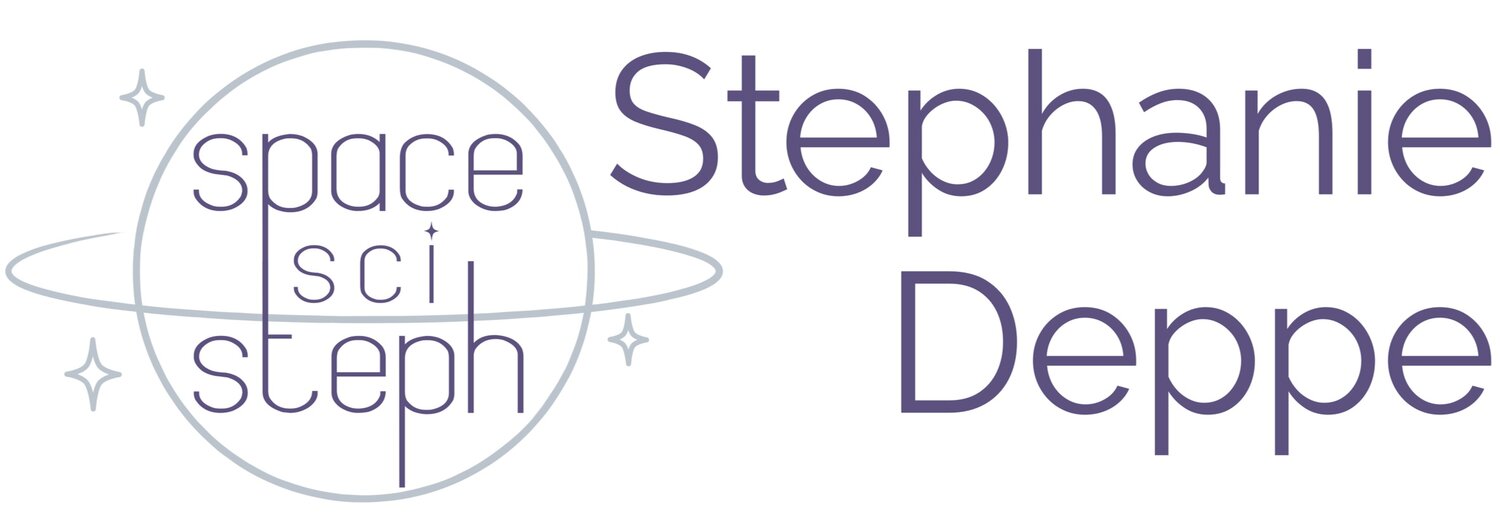Astronomy, Telescopes, and Bears, Oh My! (Part 2)
/Welcome to Part 2 of my blog series documenting my amazing time as an instructor of a ground-based astronomy course based at Kitt Peak National Observatory in Tucson, AZ! If you missed Part 1, be sure to head over there and check out that post before you jump into this one! If you haven’t browsed through my photo album of the trip, you should do that also! And without further ado…
Tuesday, May 18th
As you may recall from Part 1, we had the last night of our observing run at the 2.4m and 1.3m telescopes at the MDM Observatory on Sunday night, meaning Monday night was the first night back on a normal sleep schedule. Because of this, there were no activities scheduled on Tuesday morning, but everyone was pretty antsy for Tuesday afternoon’s activity. Why, you ask? Well, we were taking a trip to the Arizona Desert Museum – that’s right, we were leaving the mountain for the first time in about 10 days! As much as I loved being up at the summit of Kitt Peak, I was also ready for a change in scenery, even if it was only going to be for a few hours.
When I think of the word “museum,” I generally think of various exhibits arranged in a strategic way inside a giant building. The Arizona Desert Museum was about as far from that as one can get – the entire museum was outdoors! I would have called it more of a zoo, actually, with different plants and animals native to desert ecosystems as the exhibits. Consequently, it was unlike any zoo I’ve ever been in. First of all, it was located in the mountains north of Tucson, meaning that at certain points within the museum there were fabulous views of the desert landscape in and around Tucson. Second, how often does one walk through a museum or a zoo that has cacti everywhere? (Side note: there were also little baby cacti in tiny pots in the gift shop! No, I wasn’t tempted at all…).
The first exhibit we walked through was a hummingbird exhibit, with the hummingbirds freely flying around and only a net keeping them from escaping the exhibit. I seem to recall having to duck out of the way of at least one hummingbird that zoomed right by my head…that was certainly the most…interactive….exhibit we encountered! We continued around the museum, seeing everything from birds to wolves to even some otters. The exhibit I was most excited for, though, was the black bear exhibit (especially after all the hype about the black bear roaming the summit of Kitt Peak). As per my luck, naturally there was no black bear visible when we arrived at the exhibit. However, our patience was rewarded and a few minutes later we spotted a bear lumbering around in the shadows! I was quite glad that this was the only black bear I ended up seeing during my whole stay at Kitt Peak.
The day ended with stopping for some delicious Mexican food and a margarita before continuing on to the mountain for the night.
Wednesday, May 17th
Wednesday began with a lecture on optical and infrared telescopes. We talked about how telescopes direct light to magnify distant objects, the different ways one can construct a telescope, and the pros and cons of each telescope design. You might not know that there are at least five different basic telescope designs, each with their own pros and cons!
After finishing up the lecture talking about differences in telescope tubes and sizes and summarizing all of the major telescopes that have been built or are in the works, we took another tour of the WIYN and Mayall telescopes. This time, we were focusing on the physical construction of the scopes – mounts, structure, tubes, and the like. While at the 4-m Mayall telescope, our guide brought the telescope to its “service position” so that we could clearly see the mirror and the inner workings. We also got to climb into the “Cassegrain Cage,” or the chamber-like space at the bottom of the telescope below the mirror. Let me tell you, it’s a bit disconcerting sitting down there knowing there’s a 30-ton mirror and all of the other metal and telescope structure right above your head…



Thursday, May 18th
Two off-mountain excursions within three days?! This is madness! Yes, that’s right, we got to leave the mountain again! This excursion was pretty cool – we got to go to the CCD lab and the mirror lab to learn about how the camera CCD detectors and the mirrors of telescopes are made!
The first stop was the CCD lab. We were actually very fortunate to get a full tour of the lab, thanks to Sally’s connections at the University of Arizona – they usually don’t take groups back into the lab to see the CCD-making process up close and personal. But we got to see everything! Dr. Mike Lesser was our guide for the morning and he first showed us the chemical treatment baths used to treat and finish the freshly made CCD detector chips. So I guess we started the tour with a major spoiler alert, seeing the final step of manufacture first. We then got to see how the silicon pieces arrive at the lab (roughly cut to size but definitely not in their final shapes), how the tiny micro/nano-scale electronics are installed, how the chips are tested for quality (we saw the testing of CCDs that will be installed on LSST!), and finally what they look like once they are finished. I even got to take a selfie in one of the biggest CCD chips ever made!
After some delicious Chicago-style pizza for lunch, it was time to visit the mirror lab! Except, not quite…we were a little early, so we decided to check out the planetarium at the University of Arizona. Not a bad way to kill an extra hour! I was pretty excited, though, once we made our way over to the Steward Observatory Mirror Lab. I’ve long been curious how the heck one would make a giant, 4-, 6-, or 8-m mirror that is flatter than the US would be if you blew everything up to that scale. And how one would accomplish this without breaking things.
It turns out that there is a single company that makes the special type of glass needed for telescope mirrors. Which is pretty scary, because if that company goes under then we wouldn’t know where to get the glass we need…I’ll just hope that doesn’t happen! Anyway, this lab made the LSST 8-m mirror, but unfortunately it had already started its journey down to Chile by the time we took our tour. However, they are currently casting the mirrors for another huge telescope, the Giant Magellan Telescope, which will consist of seven 8-m mirrors in an array. Just let that sink in for a second….
Here’s the basic process for casting your very own giant telescope mirror!
The first thing that happens is a mold is made for the size and shape the mirror is supposed to be. Many mirrors nowadays are made in the “honeycomb” style – hollow hexagonal tube structures make up the backside of the mirror, which drastically cuts down on the amount of glass in and the weight of the final mirror.
Then the mold (which can be 8 meters in diameter, remember!) is hand packed full of chunks of that special glass.
The technicians build an oven around the mold. Yes, you read that right. This oven gets up to several thousands of degrees Celsius and the mold spins for somewhere around three days (the exact rate of spinning is determined by the final desired curvature of the mirror).
Carefully slow down the spinning and cool the furnace for 100 days. Yes, that is one hundred days. This is a very delicate process! We don’t want any deformations at all in the final, cooled piece of glass.
Pick up your several-tens-of-tons piece of glass and move it to the grinding and polishing station. Whatever you do, don’t drop it.
Grind and polish for weeks. Literally. Remember, everything needs to be smoother than the continental US!
Once the polishing is complete, the proto-mirror is packaged and sent on to its destination, where it will be coated in reflective aluminum and installed on the telescope!
I highly recommend reading this article about the casting of the LSST mirrors – the scale of the process is astounding!
The day ended with shadowing a couple of observers at the 4-m Mayall telescope, one of whom was my own advisor at Michigan! It was a little weird seeing him and catching up on two weeks of research on the other side of the country…anyway, the students got some more insight into the exciting lives of 21st century astronomers – that is, watching multiple computer screens to monitor the telescope, data quality, and any alerts that might come up. That’s a little different from how things were even 30 years ago, when astronomers worked in rooms just off the main telescope room that had windows so they could see the telescope itself.
Friday, May 19th
Friday was another exciting day with another cool tour of one of the telescopes at Kitt Peak. This time, it was of a radio telescope with a 12-m dish (think satellite TV dish, except 10 times bigger). After a morning lecture about radio astronomy, we made the short drive over to the ARO radio telescope.
A cool thing about radio astronomy is that is doesn’t have to be done only at night – you can observe radio targets during the day! Consequently, this is also why all cell phones have to be set to airplane mode on the Kitt Peak summit, because you never know when the radio astronomers will be observing. All of this meant that when we showed up for our tour at 1pm, the astronomers were prepping the telescope to start observations. Don’t worry, though, we still had plenty of time to explore the telescope (including climbing inside its Cassegrain cage equivalent!) before the actual observations started.
Here are some tidbits you might not know about radio telescopes and astronomy:
Radio telescopes don’t actually need domes! The ARO telescope only does because they wanted a little more protection from the elements.
Radio dishes are made out of carbon fiber and coated with nickel. Some of the largest ones can even be made out of mesh or chicken wire.
The resolution of the telescope is inversely proportional to its size – that is, larger telescopes have coarser resolution.
The ARO telescope uses a prototype dish for the ALMA telescope in Chile, one of the premier radio telescope facilities in the world!
Saturday, May 20th
Tonight was finally the night of the Alumni Star Party! This event invites UofM alumni (mostly local, but a couple of professors from UofM flew to Tucson for the party) to a reception and a chance to observe through an eyepiece through the 1.3m and 2.4m telescopes that the students used to take their data. With a list of targets in hand, including planets, galaxies, and nebulae, we began directing the telescope as one of the UofM professors explained the science and history behind the particular target we were looking at. We got to see Jupiter, its moons, Saturn and its rings, the Andromeda galaxy, and even a comet! All in all, it was a really awesome experience meeting these distinguished alumni of UofM and showing them some cool astronomy objects!
Sunday, May 21st
Whew, another free day…after a busy week, it was nice to have a day off to do some more exploring! After relaxing a bit and eating some lunch, I started making my way to a trail I found out about by talking to one of the Kitt Peak staff members. I had been craving some good rock climbing and hiking since I arrived at Kitt Peak! With a book in hand (well, backpack actually), I set off through the woods with the intent of climbing some rocks, gosh darn it.
I’m pleased to report that I was successful in that endeavor! There is a very prominent rock formation that is visible from many sites on Kitt Peak, and the trail went right to it. I had a great couple of hours exploring every nook and cranny of those rocks, climbing right to the tippy-top (sorry Mom!) and enjoying my book with the valley splayed out way below me. I even made a lizard friend while I was up there!
Thanks for reading, and stay tuned for Part 3 in this series!


